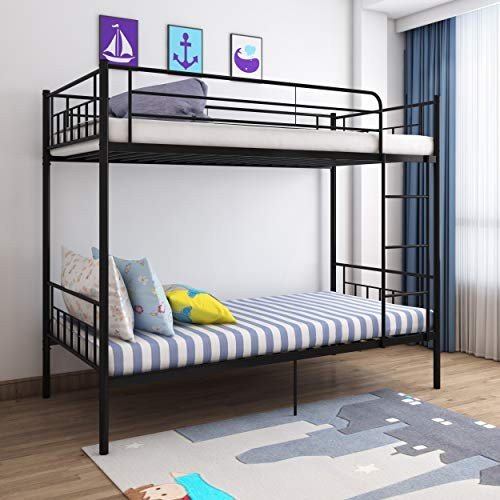A Comprehensive Guide to Children's Bunk Beds: Styles, Benefits, and Safety Considerations
Bunk beds have become a popular option for households wanting to optimize space and provide a fun sleeping environment for children. With their special style, they use an imaginative and practical service for shared bedrooms, playrooms, or even guest accommodation. This short article checks out the numerous designs of children's bunk beds, their benefits, safety considerations, and responds to some frequently asked questions.
The Allure of Bunk Beds
Children's bunk beds are more than simply space-saving structures; they are likewise an entrance to adventurous dreams and imaginative play. Below is an in-depth evaluation of their various benefits.
Benefits of Bunk Beds
- Space-Saving: Bunk beds effectively make use of vertical space, making them an ideal choice for smaller sized rooms.
- Lively Design: Many bunk bed styles consist of slides, tents, and themed aspects, triggering imagination and enjoyment.
- Partner Sharing: Bunk beds are best for brother or sisters sharing a room or accommodating pajama parties.
- Versatile Use: Some designs can be separated into 2 private beds, using versatility as kids grow.
- Storage Options: Many bunk beds feature built-in drawer storage or shelves, even more boosting their practicality.
Styles of Children's Bunk Beds
The range of bunk beds offered today accommodates various preferences and needs. Below is a summary of some popular designs.
| Style | Description | Best For |
|---|---|---|
| Requirement Bunk Bed | A traditional style featuring one bed stacked above another. | Brother or sisters sharing a space. |
| Loft Bed | Comparable to a bunk bed without the bottom bunk, allows for a work space or play area listed below. | Restricted space for play/desk. |
| L-Shaped Bunk Bed | 2 beds arranged in an L-shape, typically with additional areas for storage or play. | Special space layouts. |
| Twin Over Full | A twin bed over a complete bed, accommodating various sleep needs. | Growing kids and teens. |
| High Sleeper | Stands even greater than a loft bed, typically featuring a desk or play area listed below. | Older kids needing more play/desk space. |
| Tent Bunk Bed | Bunk beds with a canopy or tent-like structure, developing a comfortable, fun space. | Active and imaginative children. |
Secret Features to Consider
When selecting the right bunk bed for kids, the following features are worth thinking about:
- Material: Bunk beds can be made from wood, metal, or a mix. Each has its distinct visual and toughness.
- Weight Capacity: Always confirm the weight limit of the bunk bed to ensure it can accommodate your children safely.
- Safety Rails: Ensure the top bunk has tough rails to prevent falls.
- Ladder Security: A properly designed ladder ought to offer simple and safe access to the upper bunk.
- Finishing: Ensure any finishes are non-toxic and safe for kids.
Security Considerations
Safety is paramount when it concerns children's bunk beds. The following guidelines must be stuck to:
- Age Appropriateness: Generally, kids under 6 years old should not sleep in the upper bunk due to security risks.
- Sturdy Construction: Ensure the frame and materials are strong and can support the weight without drooping.
- Regular Maintenance: Periodically check for loose screws, bolts, or other components that may require tightening.
- Clear Play Area: Keep the area around the bunk bed devoid of toys and obstacles to minimize tripping risks.
Setting Rules for Safe Use
Establishing guidelines for bunk bed usage will help ensure safety:
- Limit Jumping and Climbing: Children should be recommended against jumping from the top bunk and getting on the sides.
- Monitoring Sleepovers: Monitor young visitors while they are using the bunk bed for the very first time.
- Inform on Ladder Use: Teach how to utilize the ladder securely, emphasizing the significance of dealing with the ladder when climbing or down.
Often Asked Questions
1. What age is appropriate for a kid to oversleep the leading bunk?
Most manufacturers advise that kids ought to be at least 6 years of ages to sleep in the upper bunk. This guideline is created to mitigate the danger of falls.
2. Can bunk beds be customized?
Yes, lots of producers use adjustable options, consisting of colors, materials, and additional functions like drawers or desks.
3. Are bunk beds safe for weight?
Bunk beds have weight limits, normally ranging from 200 to 400 pounds, depending on the design and product. Constantly examine Article .
4. How do I keep and clean up a bunk bed?
Routinely look for loose parts, keep the bed clean by wiping down surfaces, and ensure the bed linen is fresh to promote a safe and hygienic sleep environment.
5. Can bunk beds be separated into individual beds?
Numerous bunk beds feature a choice to separate them into 2 private beds, supplying long-lasting flexibility.
Kid's bunk beds are more than simple furnishings; they are a functional, flexible, and creative part of a child's room. With numerous designs readily available and numerous security factors to consider to remember, parents can pick the perfect bed that fits their space, fulfills their kids's needs, and imparts a sense of adventure. By comprehending the benefits, designs, and security measures associated with bunk beds, families can produce a delightful and safe and secure sleeping environment for their kids. Whether for brother or sisters sharing a space or space-saving solutions, bunk beds stay a precious choice for lots of families.

